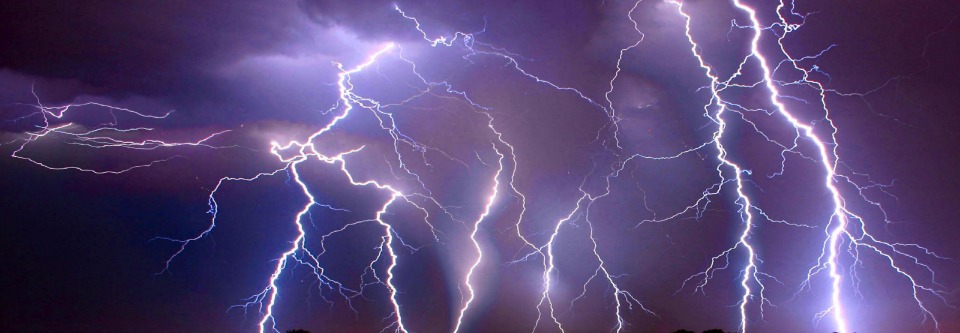Against High Vibrations: A Critique of New Age Spirituality
If you’ve ever read any self-help books or attended any personal development workshops or gone to any number of spiritual retreats you’ll very likely have come across the idea of maintaining a high vibration. I hear it all the time.
A quick Google search of high vibration brought up a slew of articles about what is a high vibration, why it’s important to have it, and what you can do to raise yours.
This teaching lies at the heart of almost, if not, all New Age spirituality, as well as various traditions influenced by New Age thinking–which increasingly is a wide range of spiritual teaching.
Of course as long as there is an idea of high vibrations, then inevitably there must low vibrations. You can’t have high without low and low without high. In this specific context the crucial point is that high vibrations are judged to be good, while low vibrations are bad.
All seems straightforward and obvious–we want to maintain a positive outlook, we want to feel good, and it’s a problem to stay mired in a negative outlook on life.
Simple, obvious right?
Well it may be a simple idea to grasp, it may even seem at first glance to be an obviously intelligent idea, but I’m going to argue it contains serious flaws. In particular I’ll focus on the way in which a high vibration teaching does significant damage to our ability to work with our emotions in a wise manner.
To preview the argument:
The central problem with a the notion of high vibrations is that it equates certain emotions with high vibration and therefore being positive. As a result, others emotions are seen as low vibration and therefore negative. High vibration easily elides into feeling good and low vibration easily turns out into feeling badly. That initial mistake opens the floodgates to numerous other consequential mistakes.
Here’s a classic example of this teaching from the spiritual writer David Hawkins.* Some version like this can be found throughout any number of New Age and New Thought writings. (I just find this one a really powerful and simple demonstration of the view–see image here).
You can see shame, guilt, apathy, grief, fear, anger are all in the negative category. Hawkins classifies these emotions as negative and of a low vibratory nature. Therefore the recommendation is to move out of such emotions into states of peace, joy, love, acceptance, and so on.
Again that all seems pretty logical–better to be joyful and peaceful than sorrowful or fearful right?
Not so fast.
Here’s what I see as fundamentally wrong about this approach–unconscious grief, shame, anger, and fear are definitely destructive. Unhealthy forms of grief, shame, anger, and fear are definitely destructive. But by qualifying these emotions with the words unconscious and unhealthy, we leave open the possibility that there is a conscious and healthy form of grief, shame, anger, and fear. In this simplistic binary system of high and low there is no ability to distinguish between different expressions of emotion–there’s no nuance or subtlety. Each emotion gets put into a good or bad category rather than seeing light and shadow sides to each emotion.
Just for the record, unhealthy and unconscious forms of happiness, peace, and acceptance are also really bad for you. For example, what if I maintain a peace at all costs attitude? What if I try to play peacemaker between two friends arguing and in so doing I actually end up hurting one of them? Am I supposed to accept prejudice? Should I be accepting of unethical behavior towards myself or others?
Hawkins’ schema is off because it categorizes emotions into positive or negative, into high or low, into good or bad. This dualism is seriously flawed and it dominates so much contemporary spirituality in more explicit forms as well as plenty of implicit ones.
This scale (intentionally or otherwise) compares the negative, unhealthy versions of one set of emotions–grief, fear, shame, anger–with the positive, healthy versions of another set–joy, love, peacefulness, etc. The game is rigged from the get go. It’s a game that ends up causing a lot well-meaning but naive spiritual seekers extraordinary amounts of unnecessary suffering.
I submit that healthy, awakened grief, fear, and anger are some of wisest teachers we have. Saying that undoes the whole simple scale of higher = better.
As compared to the terrible notion of low and high vibrations, what we want are deep and upraised vibrations. Notice the different vibration from the word deep as opposed to low. Notice the difference in saying I’m feeling deep versus I’m feeling low. One is about an absence (low) while the other is about a positive state (deep).
Deep vibration comes from integrating in a healthy way all the emotions labeled as negative by Hawkins and other New Agers. Yes it’s better to live out of peace, harmony, and joy than negative and unconscious grief, shame, desire, and fear. Much better still however is to live out of conscious integrated, awakened fear, desire, anger, shame, grief, as well as elation, peacefulness, happiness, and inspiration. To live a full-spectrum psychospiritual existence. That’s true depth.
Moreover, the word high has its own problems. It’s floaty, fleeting. You take drugs you get high but only for a short time. Inevitably you come back down (sometimes crash back down). It’s very easy to get hooked on spiritual practice or higher states of being and become a spiritual junkie.
I thought long and hard about what a better word for high would be–something that would speak to the value of inspirational experience but without the pomposity or ungrounded nature of high, I was kind of stumped, so I went to a thesaurus.
Options include: lofty (again too ungrounded), elevated (too temporary, too spiritual junkie), hovering (way too ungrounded). Another set of words emphasized more the bigness of high. Words like immense, gigantic, huge, formidable, colossal, towering, etc. These are think are again overinflated in a spiritual context.
Which left a few other potential candidates:
- soaring (might work actually–an eagle soars but is also quite strong and in a sense “grounded”)
- eminent (would be too confusing but has a truth to it)
And lastly upraised.
I like upraised.
Upraised seems more substantial than its cousin uplifted (again too floaty). Upraised might be a word that fits here. Instead of speaking of a high vibration one would speak of being upraised. There’s up but the raised part has a certain solidity to it (like raising a child).
Rather than talking about a high vibration, we should speak of a healthy ascent under whatever specific name you like there (upraised? soaring?). There absolutely is a place for healthy ascent in the spiritual path. There is Eros, the deep desire of life to evolve, grow, stretch, expand, and push beyond limits. There is Magic, the mysterious force of Creation. There is synchronicity. Things want to manifest into existence. There is incredible allurement to Life. The Universe winks at us constantly. Life is out to seduce us–to call us into partnership to create some beautiful. Following those winks from existence brings a kind of magical playful dimension to living.
That is all wonderfully true, but why is it the opposite of grieving well? Why is allurement the opposite of accessing our hatred to re-own parts of our shadow? Why is it I should have to choose one over the other? Why is one positive and the other negative?
Here is the motto I follow:
- Awakened fear is the source of our intuition.
- Awakened anger establishes healthy boundaries.
- Awakened desire is The Creative Impulse flowing through us.
- Awakened shame is liberated humility.
- Awakened grief teaches us how to mourn and therefore how to live.
- Awakened sadness is utter release.
- Awakened guilt is proper remorse and contrition.
None of these are available to one who promotes high vibrations. The richness of incarnate human existence is lost. The wondrous fabric of the human being is torn irrevocably by high vibration New Age teaching.
In my church days I once met a person who came to the church I was working from another church. She said she that when she first started attending her old church, she was found the community really helped her in her spiritual life. She felt a deep sense of meaning there. But after a few years it all began to feel flat. I asked her why she thought her soul starting drying up there. She had this great line, she said, “It’s always a sunny day there [at that church].”
That’s a brilliant critique. When a person is in the dumps a sunny outlook seems like a ray a hope. And for a short time it really can be that. But when one comes out of the pits and readjusts eventually they will realize that it’s actually not good to only have sunny days. “It’s always a sunny day over there” was not a compliment. It was a very important insight and a kind of warning.
So it is with high vibration teaching. It can help people start to take responsibility for their lives, focus on gratitude, and put their energy to doing what brings them happiness, fulfillment, and peace. But eventually it comes to feel flat.
We need to find beauty in the rain, in the storms, in the nighttime, the grey overcast days and yes also absolutely in the sunny days. All of them. The high vibration/low vibration teaching can get some people, for a time, out of the ditch. I’ve seen it. But then it creates a new and far subtler obstacle to further depth and growth. It’s easy to see how letting toxic shame destroy our lives is bad. It’s much harder (but nonetheless true) to notice the ways in which being drawn to high vibration is preventing our full conscious expressions as human beings.
Better to be deep than low. Better to be upraised than high. Best to integrate the best of both.
—
* My criticism of the high/low vibration scheme from David Hawkins’ is not a criticism of his spiritual experience (which I think is quite real and powerful). It’s a criticism of this aspect of his interpretation and teaching around spiritual experience.














